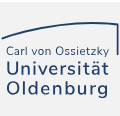Detailed introduction of the University of Oldenburg:
Introduction
The University of Oldenburg is a famous comprehensive university in Lower Saxony, Germany. It is named after Nobel Peace Prize winner Carl von Ossietzky. It has outstanding performance in interdisciplinary research, teacher education and other fields.
Overview
Number of students and faculty: In 2024, the school has about 15,220 students, including nearly 1,000 foreign students from all over the world. The number of faculty includes 1,459 academic staff and 1,037 administrative staff.
Subject areas: Subjects cover pedagogy, sociology, computer science, economics, law, linguistics, cultural studies, humanities, mathematics, natural sciences, medicine, health sciences and other fields.
History and establishment time
As early as 1793, the city of Oldenburg had teacher training initiated by Duke Peter Friedrich Ludwig. The first teacher seminar was established in 1882, the College of Education was established in 1929, it was reopened after the war in 1945 and renamed Oldenburg College of Education in 1948. The first step to establish a university was taken in 1959. In 1970, the Minister of Culture of Lower Saxony issued a memorandum to establish the University of Oldenburg. It was finally officially established in 1973 and began to enroll and teach in the summer semester of 1974. That year, 2,400 students were enrolled. In 1991, the school was officially named after Karl von Ossietzky, and the number of students exceeded 10,000 in the same year. In 2002, the school's eleven departments were reorganized into five colleges, and the School of Medicine and Health Sciences was established in 2012.
School Strength
Teaching Strength: The courses are rich and diverse, focusing on the combination of theory and practice. Through cooperation with enterprises and research institutions, students are provided with internships and practical projects to enhance their practical ability and employment competitiveness. For example, students majoring in computer science have the opportunity to participate in actual software development projects.
Scientific research strength: The university has strong scientific research strength, conducts cutting-edge research in multiple fields, and has multiple scientific research institutions and cooperative projects. The university has made remarkable achievements in the fields of sustainable development, renewable energy and marine science, and its scientific research results have a certain influence in academia and industry. For example, in energy research, the university's research on materials and systems and networks provides technical support for the development of the energy field.
Institutional nature
Public university.
Educational philosophy
Emphasis on interdisciplinary research and learning, cultivate students' ability to think and solve problems from different perspectives, encourage students to participate in scientific research projects and practical activities, improve students' innovative thinking and practical ability, and is committed to cultivating professionals with international vision and social responsibility, so that students can adapt to work and research needs in different fields in the context of globalization.
Key laboratories and disciplines
Key disciplines: Teacher majors are its advantageous majors, especially the doctoral majors of reconstruction education for teachers and students' research have a very high reputation, and master's majors also give teachers the choice of direction. In addition, the school is also in a leading position in the fields of sustainable development, renewable energy and marine science. The school's Institute of Biology and Environmental Sciences, Institute of Marine Environmental Chemistry and Biology, etc. provide strong support for related research, and its School of Medicine and Health Sciences has also developed rapidly.
Key laboratories: The school has many advanced laboratories, such as the laboratory of the School of Computer Science is equipped with high-performance computer equipment and advanced software development tools to support research in cutting-edge fields such as artificial intelligence and big data; the laboratory of the School of Medicine has advanced medical testing equipment and simulation teaching facilities for medical research and student practical operations. In addition, in the field of marine science, the school conducts extensive marine research through the research vessel "sonne".
Department Settings
The school has 6 colleges and 23 departments, as follows:
College No. 1: Education, Sociology;
College No. 2: Computer Science, Economics, Law;
College No. 3: Linguistics, Cultural Studies;
College No. 4: Humanities, Liberal Arts;
College No. 5: Mathematics, Natural Sciences;
College No. 6: Medicine, Health Sciences.
Ranking
In 2021, the University of Oldenburg ranked 901-1000 in the Academic Ranking of World Universities by Soft Science.
Expenses
Tuition fees: German public universities usually do not charge tuition fees, but a certain registration fee is required each semester. The registration fee of this school is about 300-500 euros/semester.
Living expenses: The cost of living in Oldenburg is moderate, and the monthly living expenses are about 800-1000 euros, including accommodation, food, transportation, books and other expenses.
Campus
Campus distribution: The campus is mainly divided into two campuses. The main campus is located in Uhlhornsweg, where the school’s main library, cafeteria, administrative department and most of the faculties are located; the Wechloy campus is mainly a research site for natural sciences and the location of the Natural Science Library.
Campus facilities: The campus has complete teaching facilities and scientific research equipment, with modern laboratories, libraries, computer centers, etc. In addition, the school also has sports facilities such as gymnasiums and sports fields to enrich students’ extracurricular life.
-
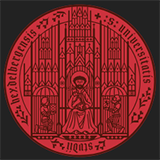
Heidelberg University
-
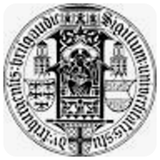
University of Freiburg
-
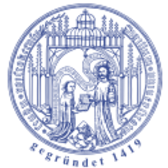
University of Rostock
-
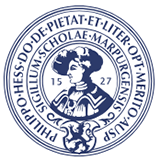
University of Marburg
-
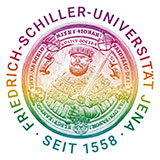
University of Jena
-
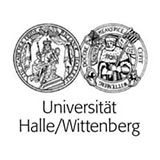
University of Halle-Wittenberg
-
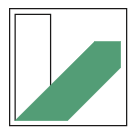
University of Bayreuth
-

Leipzig University
-
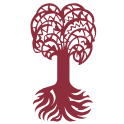
University of Tübingen
-
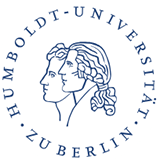
Humboldt University of Berlin
-

Mesoamerican University
-

Istmo University
-

Mariano Galvez University of Guatemala
-

Regional University of Guatemala
-

Galileo University
-

Francisco Marroquín University
-

Rafael Landívar University
-

University of the Valley of Guatemala
-

University of San Carlos of Guatemala
-

Technological Institute of Tlaxcala Plateau
-

Golfo University
-

Technological University of South Sonora
-

Technological University of Huejotzingo
-

Tizimín Institute of Technology
-

Chilpancingo Institute of Technology

